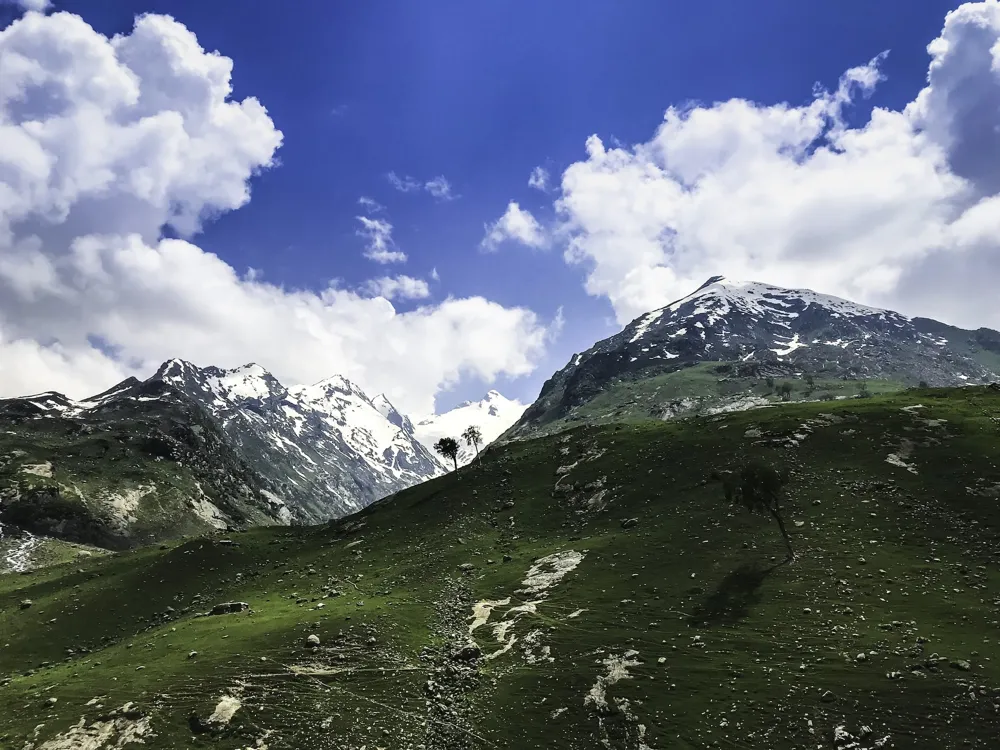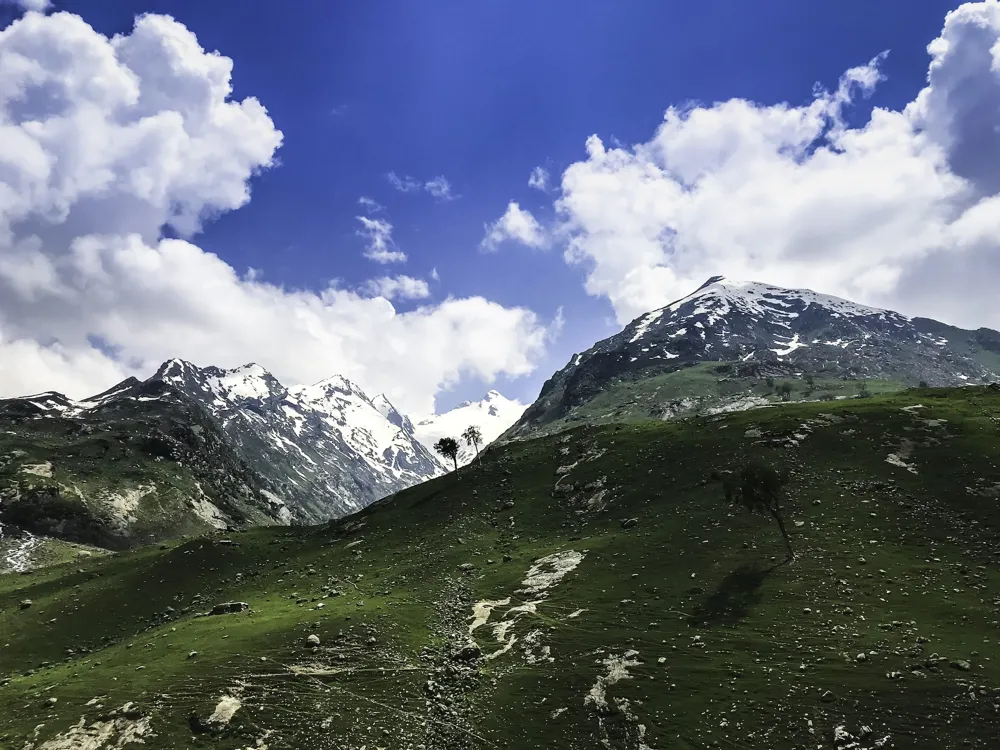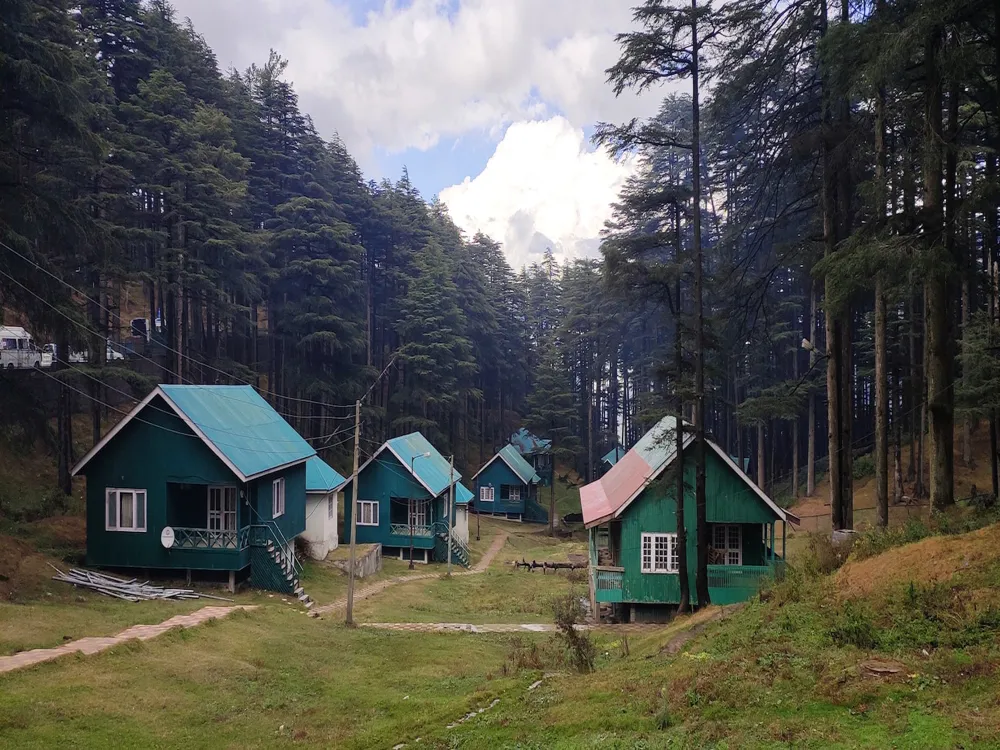Nestled in the serene environment of Anantnag in Jammu and Kashmir, the Kherbawani Asthapan stands as a symbol of spiritual significance and architectural marvel. This sacred site, deeply revered by the local community, is not just a place of worship but a testament to the rich cultural tapestry of the region. The history of Kherbawani Asthapan is steeped in lore and tradition, tracing back centuries. It has been a beacon of faith and a melting pot of diverse cultural influences, offering a unique glimpse into the spiritual heritage of Kashmir. The temple's significance extends beyond its religious aspects; it serves as a symbol of communal harmony and cultural cohesiveness. Throughout the years, Kherbawani Asthapan has witnessed numerous festivals and rituals, drawing devotees from various backgrounds. Its serene ambiance provides a tranquil retreat from the bustling life, inviting visitors to immerse themselves in a spiritual experience. The temple's role in the local community is multifaceted, serving as a center for religious activities, cultural events, and social gatherings, making it an integral part of the socio-cultural landscape of Anantnag. The architecture of Kherbawani Asthapan is a splendid display of Kashmiri craftsmanship and artistic expression. The temple's design reflects a harmonious blend of local architectural styles with influences from various periods of Kashmir's history. The primary structure of the temple is built with indigenous materials, showcasing the region's natural beauty and the skill of local artisans. Intricate carvings and detailed motifs adorn the temple's exterior and interior, each telling a story of the region's rich cultural and religious heritage. The layout of Kherbawani Asthapan is meticulously planned, symbolizing the philosophical and spiritual concepts inherent in its design. The temple complex includes several smaller shrines, each dedicated to different deities, representing the diverse religious practices prevalent in Kashmir. The use of space, light, and natural elements in the temple's architecture creates a serene and contemplative atmosphere, encouraging introspection and spiritual connection. The fusion of aesthetics and spirituality in the temple's design makes it a remarkable example of Kashmiri architectural brilliance. When visiting Kherbawani Asthapan, it's crucial to respect the local customs and traditions. Dress modestly, and be mindful of the cultural sensitivities of the area. Engaging with the locals and understanding their practices enhances the visit experience. The ideal time to visit Kherbawani Asthapan is during the spring and summer months when the weather is pleasant, and the natural beauty of the region is at its peak. Festivals and special events during this period offer a unique insight into local traditions. While photography might be allowed, it's important to seek permission before capturing images of the temple and its surroundings. Be respectful of the privacy of worshippers and avoid intrusive photography. Kherbawani Asthapan is accessible via a network of roads and public transport from major cities in Jammu and Kashmir. The nearest airport is in Srinagar, from where one can hire taxis or take buses to Anantnag. The temple is well-connected by road, and the journey offers picturesque views of the Kashmir valley. For those traveling by train, the nearest railway station is in Anantnag. From the station, local transportation options like auto-rickshaws and buses are available to reach the temple. The journey to Kherbawani Asthapan is as mesmerizing as the destination itself, with the route passing through scenic landscapes and traditional Kashmiri villages. Read More:Overview of Kherbawani Asthapan, Anantnag, Jammu and Kashmir
Architecture of Kherbawani Asthapan
Tips When Visiting Kherbawani Asthapan
Respect Local Traditions
Best Time to Visit
Photography Guidelines
How to Reach Kherbawani Asthapan
Kherbawani Asthapan
Anantnag
Jammu And Kashmir
NaN onwards
View anantnag Packages
Anantnag Travel Packages
View All Packages For Anantnag
Top Hotel Collections for Anantnag

Private Pool

Luxury Hotels

5-Star Hotels

Pet Friendly
Top Hotels Near Anantnag
Other Top Ranking Places In Anantnag
View All Places To Visit In anantnag
Faq on Anantnag
What is Kherbawani Asthapan Anantnag?
Kherbawani Asthapan Anantnag is a revered Hindu temple located in Anantnag district of Jammu and Kashmir, India. It is dedicated to the goddess Kheer Bhawani, a form of Goddess Durga.
What is the significance of Kherbawani Asthapan Anantnag?
Kheer Bhawani temple holds immense religious significance for Kashmiri Pandits and Hindus. It is believed that the color of the sacred spring water inside the temple changes, foretelling the future of Kashmir.
When is the best time to visit Kherbawani Asthapan Anantnag?
The best time to visit Kherbawani Asthapan Anantnag is during the annual festival of Kheer Bhawani Mela, which usually falls in May or June according to the Hindu calendar. This is when devotees from all over gather to pay homage to the goddess.
How can one reach Kherbawani Asthapan Anantnag?
Kherbawani Asthapan Anantnag is located in Tulla Mulla village, approximately 25 kilometers from Srinagar. One can reach there by road via taxis or private vehicles. Srinagar is well-connected by air, rail, and road transport.
Are there any accommodation options near Kherbawani Asthapan Anantnag?
Yes, there are accommodation options available near Kherbawani Asthapan Anantnag ranging from budget hotels to guesthouses. Visitors can also find accommodation in nearby towns like Srinagar and Anantnag.
View anantnag Packages
Anantnag Travel Packages
View All Packages For Anantnag
Top Hotel Collections for Anantnag

Private Pool

Luxury Hotels

5-Star Hotels

Pet Friendly
Top Hotels Near Anantnag
Other Top Ranking Places In Anantnag
Faq on Anantnag
What is Kherbawani Asthapan Anantnag?
Kherbawani Asthapan Anantnag is a revered Hindu temple located in Anantnag district of Jammu and Kashmir, India. It is dedicated to the goddess Kheer Bhawani, a form of Goddess Durga.
What is the significance of Kherbawani Asthapan Anantnag?
Kheer Bhawani temple holds immense religious significance for Kashmiri Pandits and Hindus. It is believed that the color of the sacred spring water inside the temple changes, foretelling the future of Kashmir.
When is the best time to visit Kherbawani Asthapan Anantnag?
The best time to visit Kherbawani Asthapan Anantnag is during the annual festival of Kheer Bhawani Mela, which usually falls in May or June according to the Hindu calendar. This is when devotees from all over gather to pay homage to the goddess.
How can one reach Kherbawani Asthapan Anantnag?
Kherbawani Asthapan Anantnag is located in Tulla Mulla village, approximately 25 kilometers from Srinagar. One can reach there by road via taxis or private vehicles. Srinagar is well-connected by air, rail, and road transport.
Are there any accommodation options near Kherbawani Asthapan Anantnag?
Yes, there are accommodation options available near Kherbawani Asthapan Anantnag ranging from budget hotels to guesthouses. Visitors can also find accommodation in nearby towns like Srinagar and Anantnag.





















